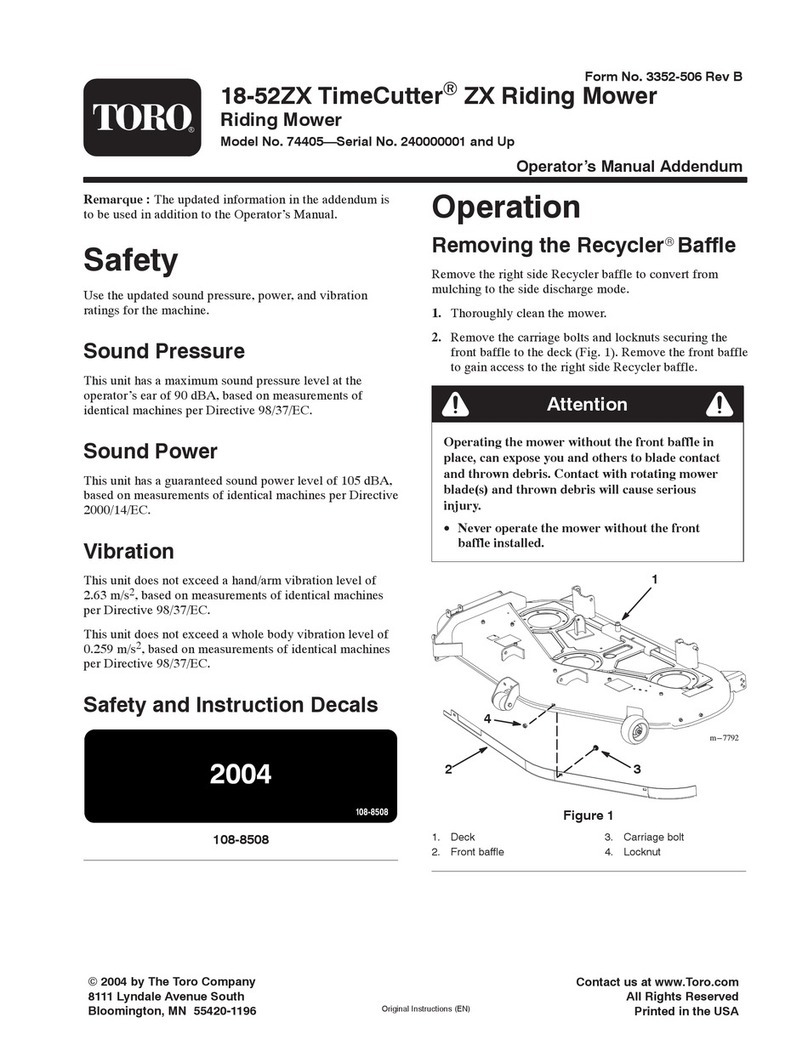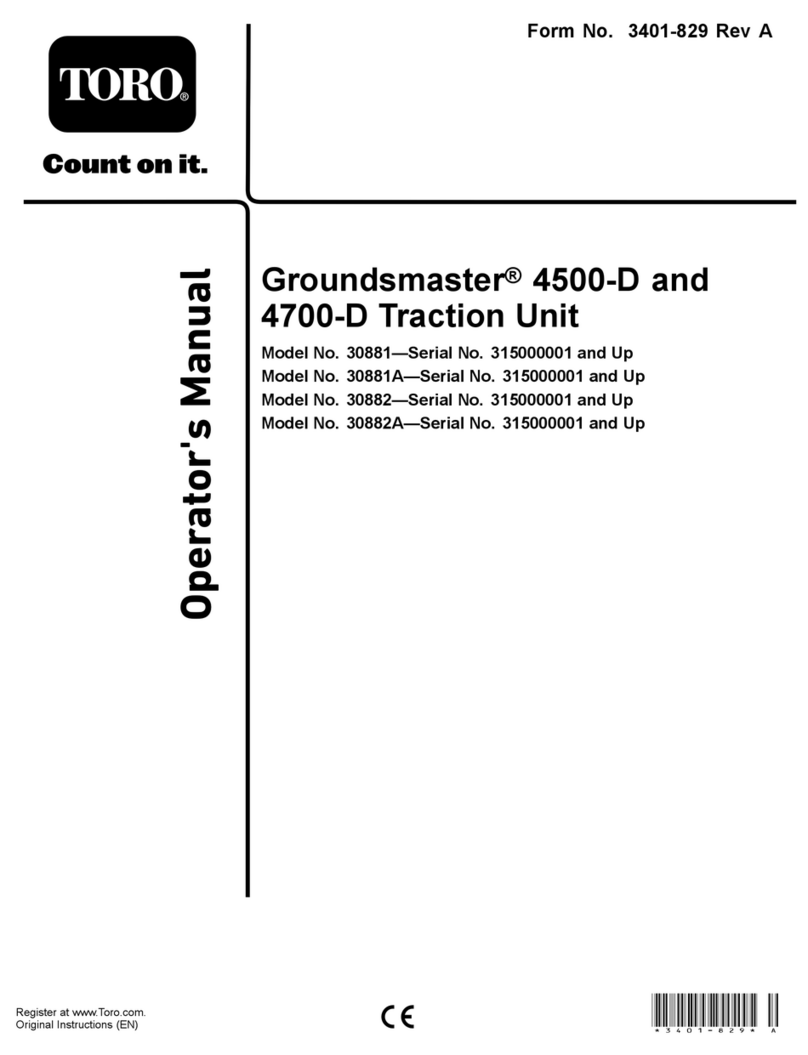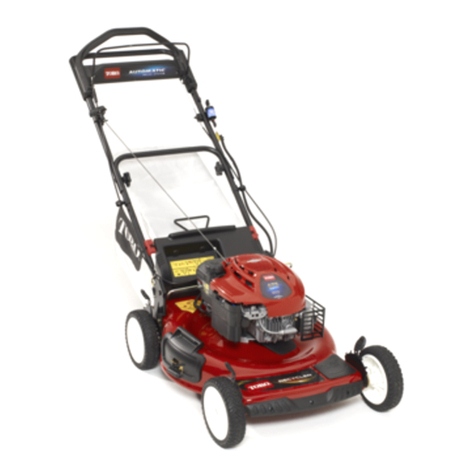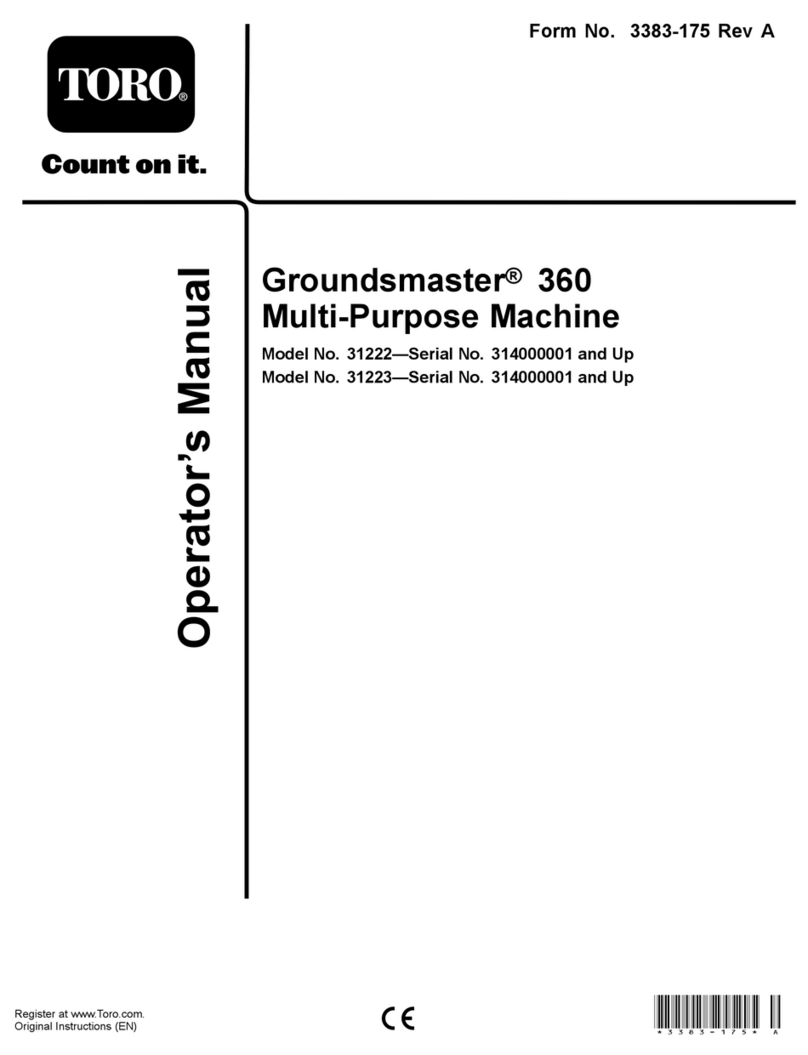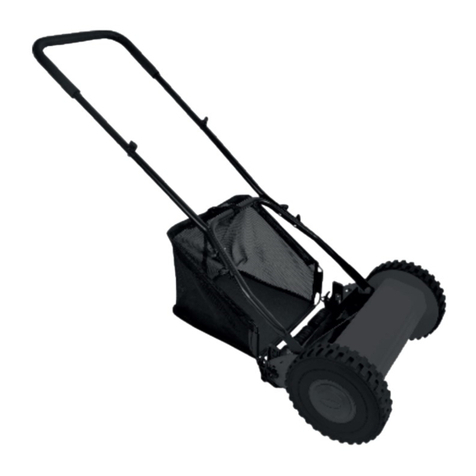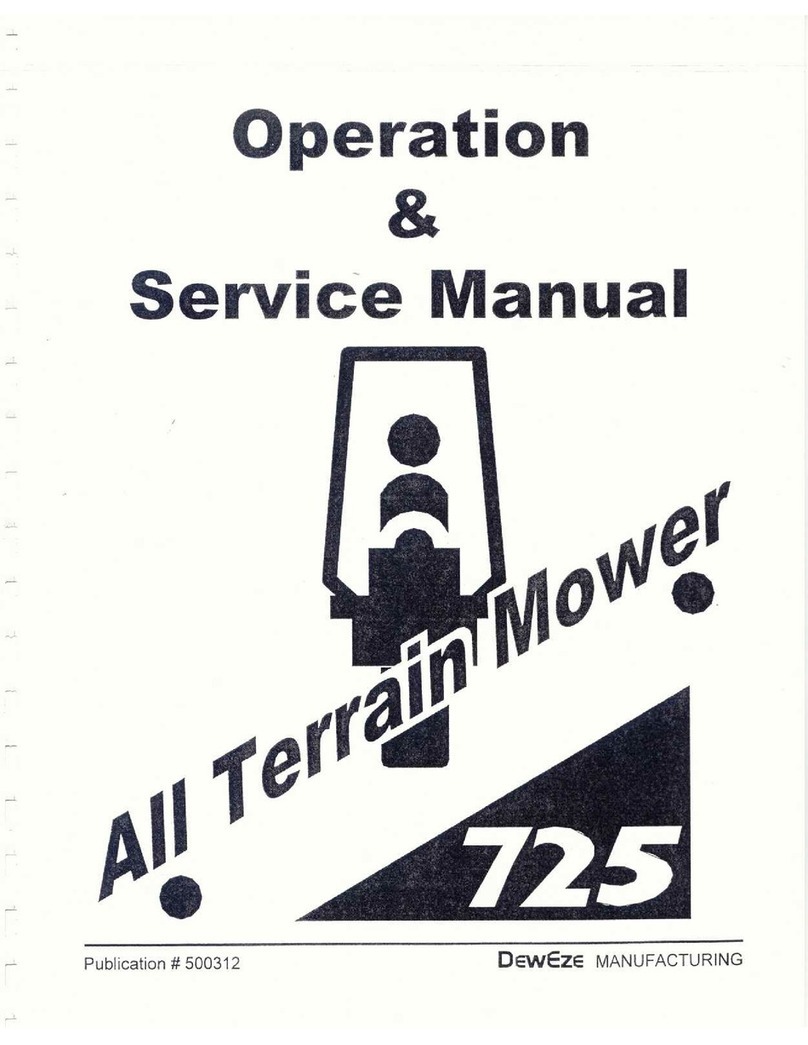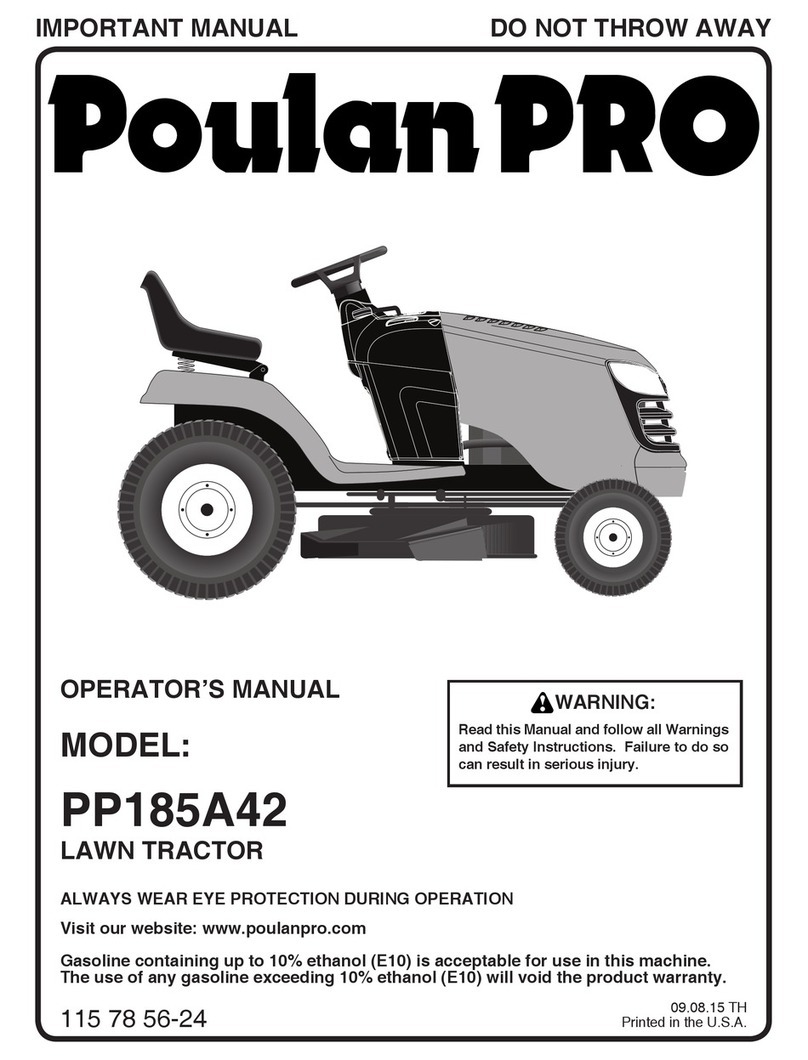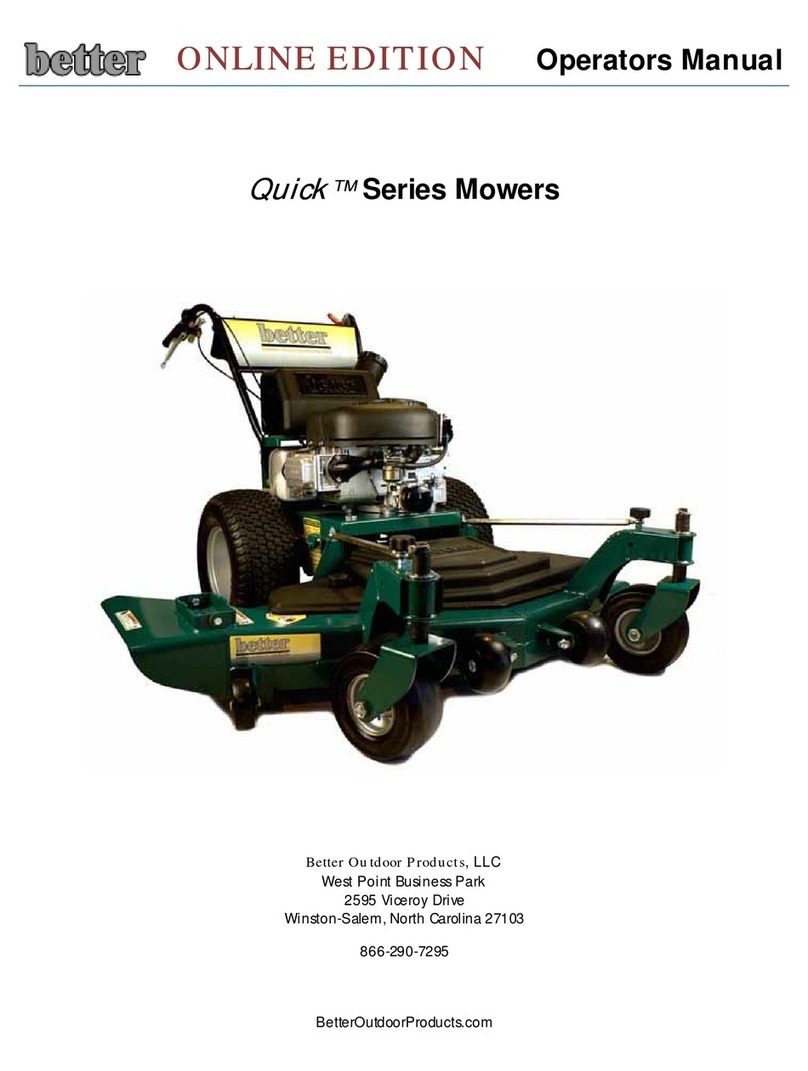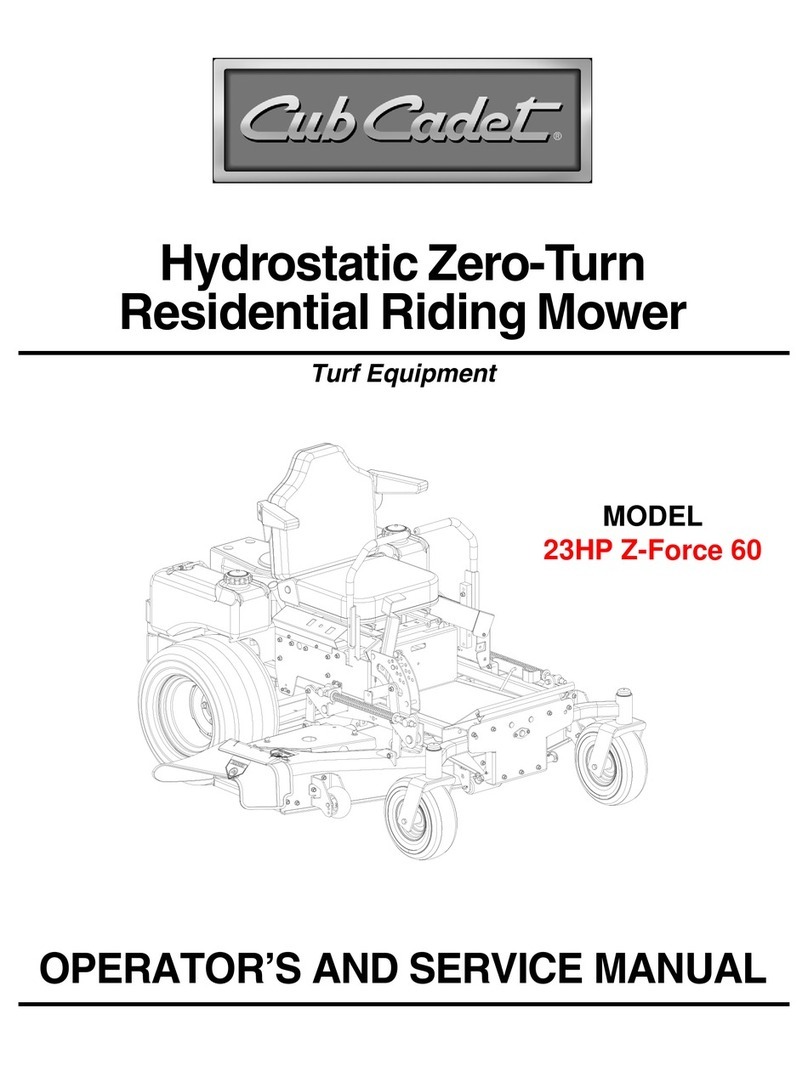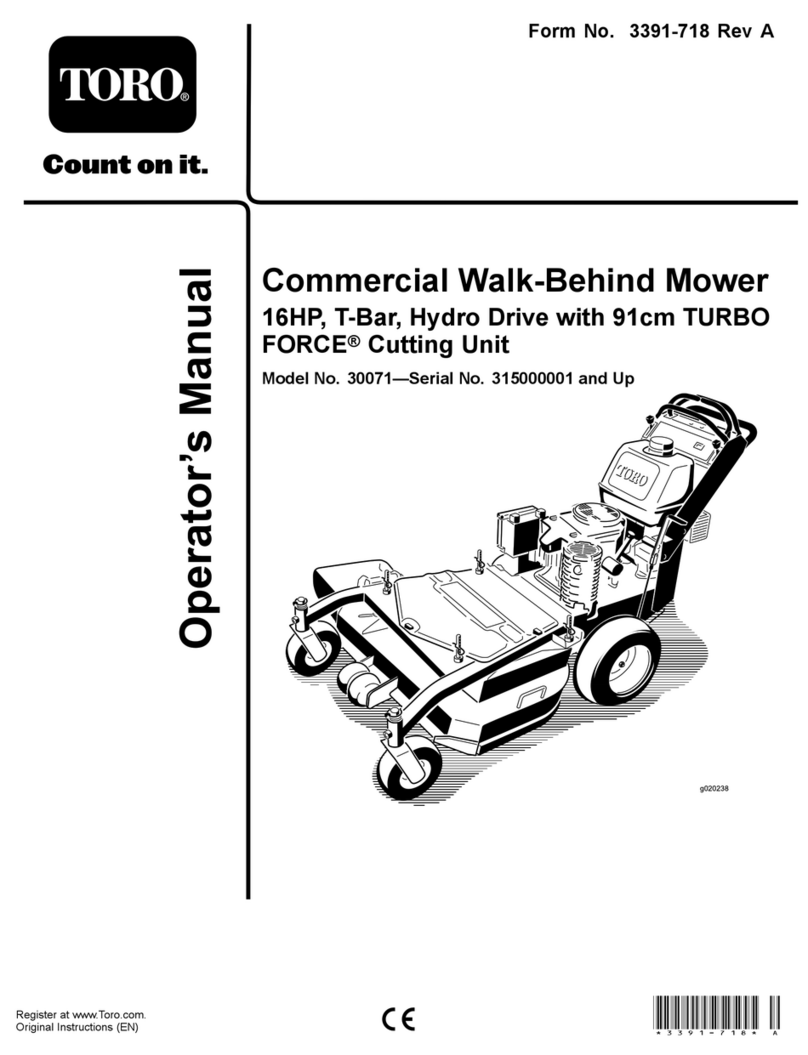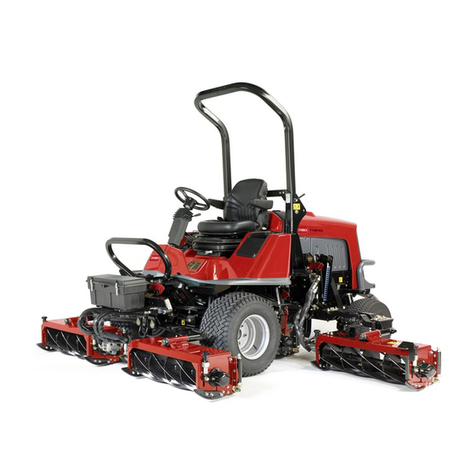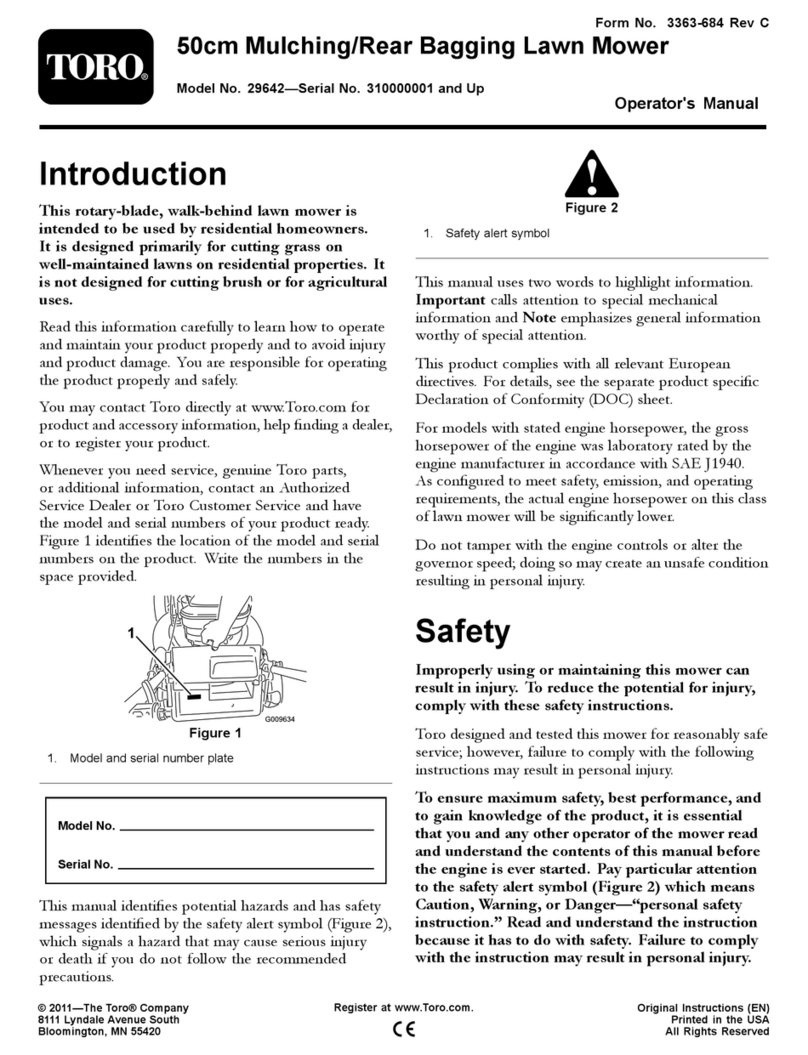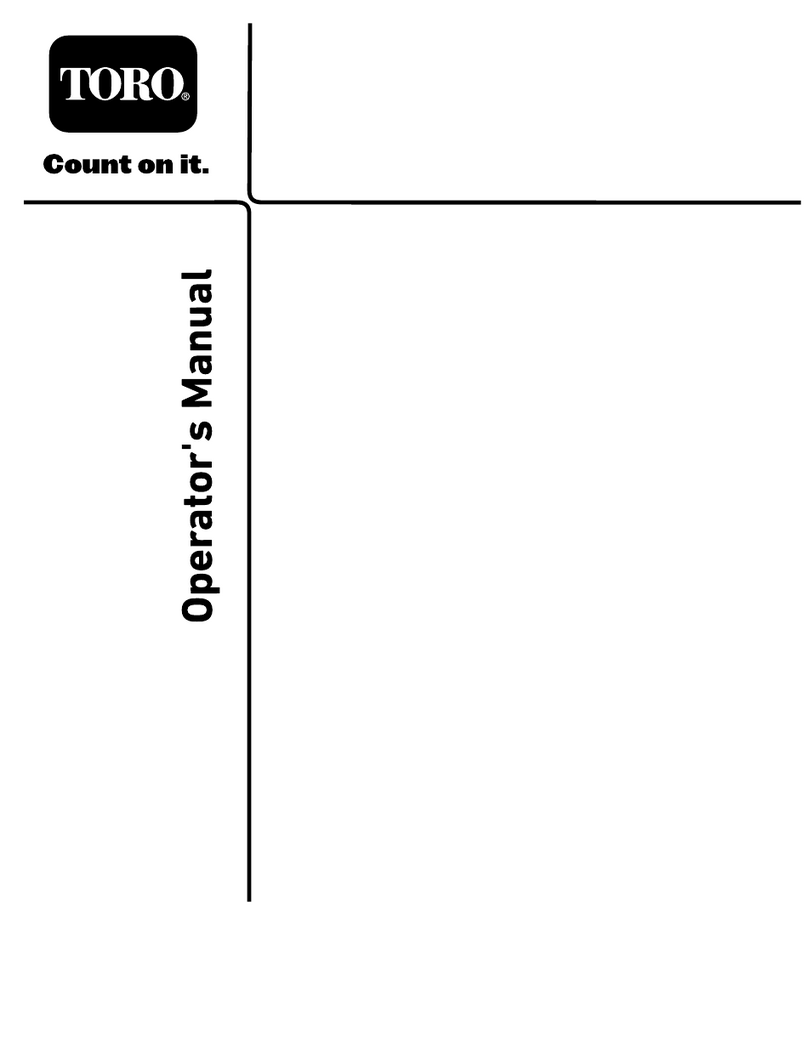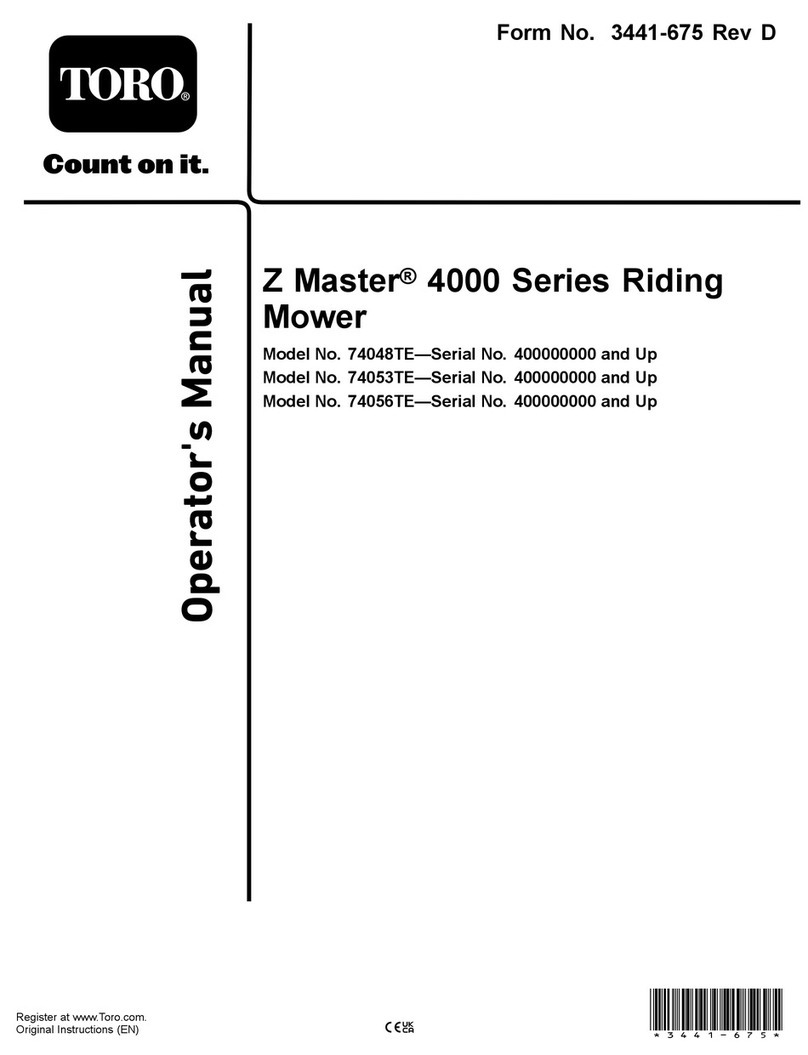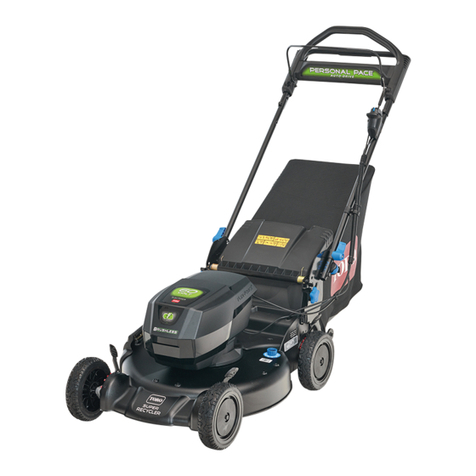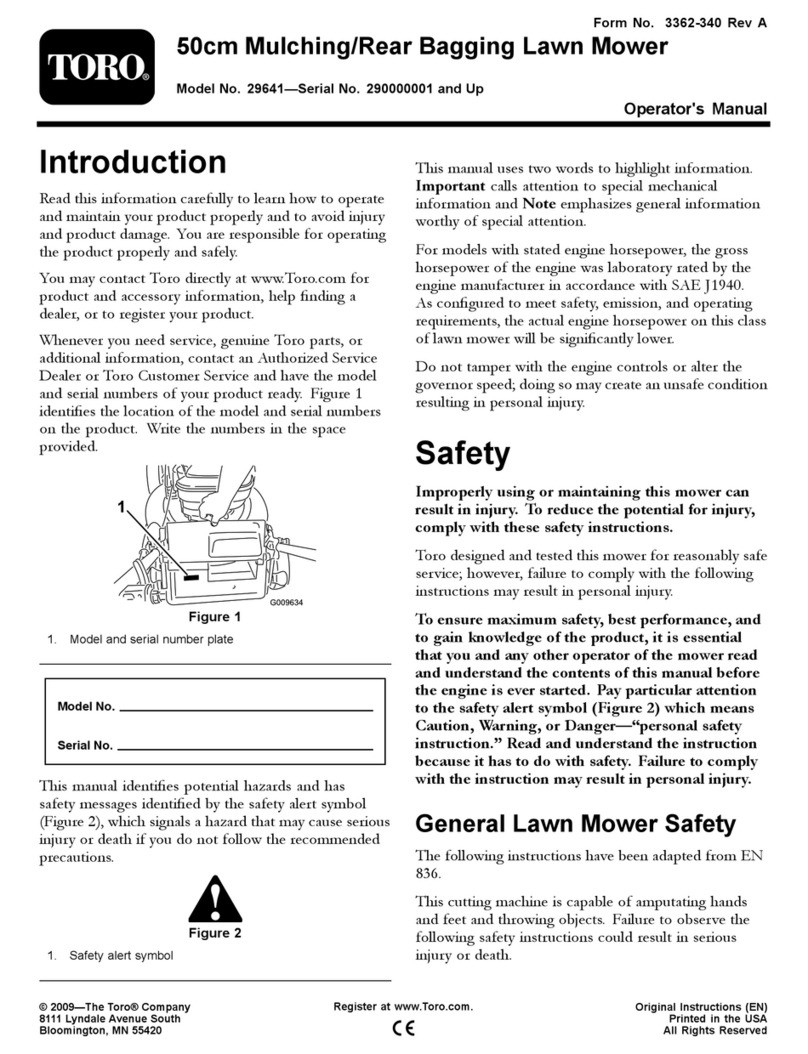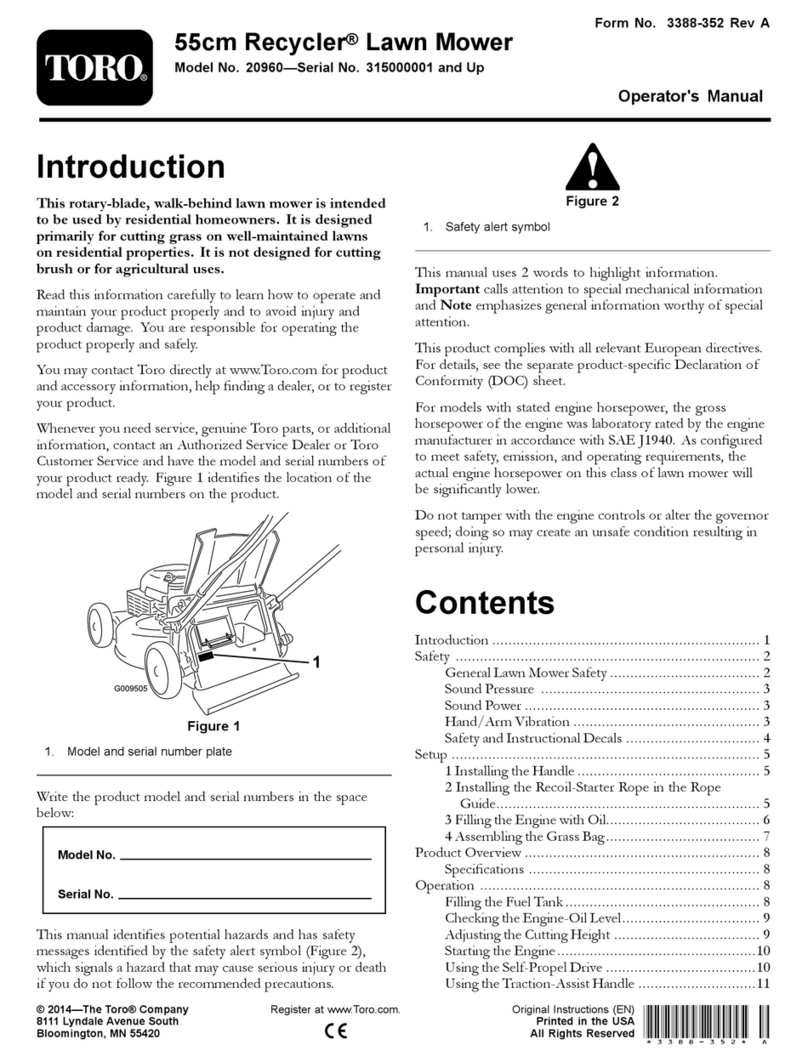
5
This product is capable of amputating hands and feet and
throwing objects. Always follow all safety instructions to
avoid serious injury or death.
Use of this product for purposes other than its intended use
could prove dangerous to user and bystanders.
Operation
•Always wear substantial shoes. Do not operate the
machine while wearing sandals, tennis shoes, or
sneakers.
•Wearing safety shoes and long pants is advisable and
required by some local ordinances and insurance
regulations.
•Fill fuel tank until level is 1 in. (25 mm) below the
bottom of the filler neck. Do not overfill.
•Check the safety interlock switches daily for proper
operation. If a switch should fail, replace the switch
before operating the machine. After every two years,
replace all three interlock switches in the safety system,
regardless if they are working properly or not.
•The grass deflector(s) must always be installed and in
the lowest position on the cutting unit.
•Pay attention when using the machine. To prevent loss
of control:
– Drive slowly.
– Do not drive close to sand traps, ditches, creeks, or
other hazards.
– Reduce speed when making sharp turns. Avoid
sudden stops and starts.
– Lower the cutting unit when going down slopes.
•Do not touch the engine, radiator, or muffler while the
engine is running or soon after it has stopped because
these areas could be hot enough to cause burns.
•If a cutting blade strikes a solid object or vibrates
abnormally, disengage PTO, move throttle to Slow, set
the parking brake, stop the engine, and remove the
ignition key. Wait for all motion to stop, and inspect the
machine for damage. Repair or replace any damaged
parts before operating. Ensure that the cutting blades
are in good condition and the blade bolts are torqued to
proper specifications (see Cutting Deck Operator’s
Manual).
•Check carefully for overhead clearances such as
branches, doorways, and electrical wires before driving
under any objects. Do not contact the objects.
•Make sure that the set belt can be removed quickly if
the machine is driven or rolls into a pond or lake.
•If the engine stalls or the machine loses headway and
cannot make it to the top of a slope, do not turn the
machine around. Always back slowly straight down the
slope.
•If the cutting unit discharge area ever plugs, disengage
PTO and shut engine off before removing the
obstruction.
•When operating a 4 wheel drive machine or any
machine on slopes, by banks, or drop offs, always have
the ROPS (Roll Over Protection System) installed.
•When operating the machine with ROPS, always use
the seat belt and make sure that the seat pivot retaining
pin is installed.
Maintenance and Storage
•Before servicing or making adjustments, stop the engine
and remove the ignition key.
•Ensure that the entire machine is properly maintained
and in good operating condition. Frequently check all
nuts, bolts, and screws. Check all cutting unit blade
mounting bolts frequently to ensure that they are
torqued to proper specifications (see Cutting Deck
Operator’s Manual).
•Make sure all hydraulic line connectors are tight and all
hydraulic hoses and lines are in good condition before
applying pressure to the system.
•Keep your body and hands away from pin hole leaks or
nozzles that eject hydraulic fluid under high pressure.
Use paper or cardboard, not your hands, to search for
leaks. Hydraulic fluid escaping under pressure can have
sufficient force to penetrate the skin and cause serious
injury.
•Before disconnecting or performing any work on the
hydraulic system, all pressure in the system must be
relieved by stopping the engine and lowering the cutting
units to the ground.
•If the engine must be running to perform a maintenance
adjustment, keep hands, feet, clothing, and any parts of
the body away from the cutting units, attachments, PTO
shaft, and any moving parts.
•Do not overspeed the engine by changing governor
settings. To ensure safety and accuracy, have an
Authorized Toro Distributor check the maximum engine
speed with a tachometer. Maximum governed engine
speed with no load should be 3200–3250 RPM.
•The engine must be shut off before checking the oil or
adding oil to the crankcase.
•Periodically inspect the roll bar and roll bar mounting.
Replace, if necessary. Do not modify roll over
protection frames or structures because they are

